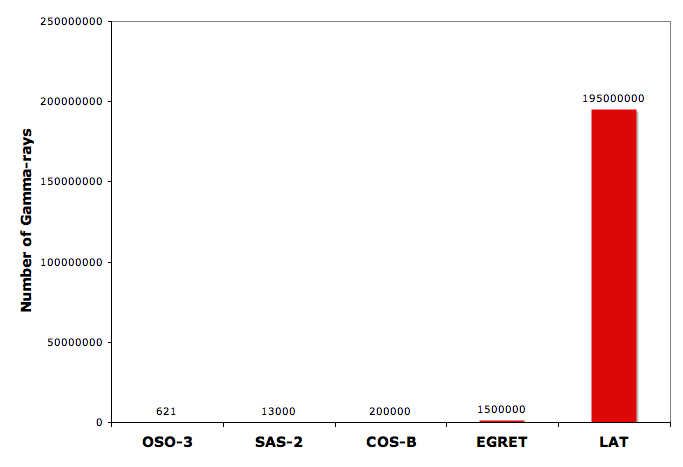More than 100 billion events have been detected by the Large Area Telescope on Fermi after 616 days in orbit. That is a lot of events.
What is an event?
The Large Area Telescope detects gamma-rays, one at a time, at a rate of a few per second. We measure where each one comes from and use this information to build up a deeper and deeper picture of the gamma-ray sky. However for each gamma-ray, we detect over one thousand cosmic-rays – charged particles moving at close to the speed of light. We call each cosmic-ray or gamma-ray detected by the LAT an event.
We don’t send the data from all events down to the ground. We are primarily interested in the gamma-rays so we run software onboard the Large Area Telescope to identify and delete events that are clearly cosmic-rays. This reduces the rate of events from 4000 per second to around 400 per second. This allows us to make better use of the precious data transfer connection between the observatory and the ground. Once we get the data down to the ground, we use a large computer farm (>1000 machines) to process the data carefully and pick out the real gamma rays, which arrive a few per second.
Lots and lots of gamma rays!

Compared with previous gamma-ray telescopes the LAT detects gamma-rays at a far greater rate. The plot shows the number of gamma-rays detected by four previous gamma-ray telescopes over their operating lifetime compared to the number of gamma-rays detected by LAT in a single year. There are so many gamma-rays detected by LAT that you can barely see that any are detected by the previous missions (OSO-3, SAS-2, COS-B and EGRET). The enhanced ability of LAT to detect gamma-rays so efficiently is one of the reasons that Fermi is such a ground-breaking mission.
